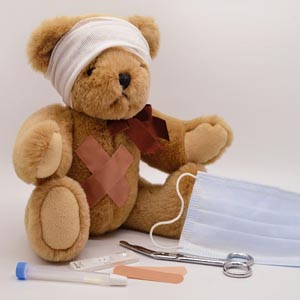Minimally invasive pilonidal sinus disease (PSD) treatment in pediatric patients: A narrative review

Submitted: 27 December 2021
Accepted: 1 February 2022
Published: 15 March 2022
Accepted: 1 February 2022
Abstract Views: 1478
PDF: 683
HTML: 32
HTML: 32
Publisher's note
All claims expressed in this article are solely those of the authors and do not necessarily represent those of their affiliated organizations, or those of the publisher, the editors and the reviewers. Any product that may be evaluated in this article or claim that may be made by its manufacturer is not guaranteed or endorsed by the publisher.
All claims expressed in this article are solely those of the authors and do not necessarily represent those of their affiliated organizations, or those of the publisher, the editors and the reviewers. Any product that may be evaluated in this article or claim that may be made by its manufacturer is not guaranteed or endorsed by the publisher.
Similar Articles
- Chiara Arrigoni, Nunzio Catena, Chronic Monteggia in pediatric population: A narrative literature review , La Pediatria Medica e Chirurgica: Vol. 44 No. s1 (2022)
- Angela Riccio, Gabriele Lisi, Maria Enrica Miscia, Gilda Di Paolo, Giuseppe Lauriti, Pierluigi Lelli Chiesa, Secondary hydrosalpinx in adolescents: a challenging decision-making process for surgical choice and future fertility preservation , La Pediatria Medica e Chirurgica: Vol. 42 No. 2 (2020)
- Roberto Bellù, Manuela Condò, Breastfeeding promotion: evidence and problems , La Pediatria Medica e Chirurgica: Vol. 39 No. 2 (2017)
- Kleanthis Anastasiadis, Vassilis Lambropoulos, Kalliopi Tsoleka, Chrysostomos Kepertis, Vassilis Mouravas, Ioannis Spyridakis, Frontal bone fibrous dysplasia in a 6-months-old boy: A distinctive entity , La Pediatria Medica e Chirurgica: Vol. 43 No. 1 (2021)
- F. Ciuffini, O. Marijke, A. Lavizzari, B. Ghirardi, S. Musumeci, E. Dusi, M. Colnaghi, F. Mosca, Assessment of pulmonary function in a follow-up of premature infants: our experience , La Pediatria Medica e Chirurgica: Vol. 35 No. 5 (2013)
- G. Pajardi, C. Parolo, G. Proserpio, V. Ponti, P. Rossi, C. Cargnelutti, Camptodactyly: early nonoperative treatment , La Pediatria Medica e Chirurgica: Vol. 35 No. 6 (2013)
- Francesco Tandoi, Laura Morlacchi, Angela Bossi, Massimo Agosti, Introducing complementary foods in the first year of life , La Pediatria Medica e Chirurgica: Vol. 39 No. 4 (2017)
- Roberto Bellù, Manuela Condò, Functional gastrointestinal disorders in newborns: nutritional perspectives , La Pediatria Medica e Chirurgica: Vol. 40 No. 1 (2018)
- V. Riccio, I. Riccio, G. Porpora, D. Riccardi, G. Riccardi, Septic arthritis in children , La Pediatria Medica e Chirurgica: Vol. 34 No. 3 (2012)
- D. Benini, G. De Stefano, S. Provera, C. Pizzini, A. Deganello, Epidemiological survey on urinary incontinence in school population in Verona (Italy) , La Pediatria Medica e Chirurgica: Vol. 34 No. 6 (2012)
<< < 8 9 10 11 12 13 14 15 16 17 > >>
You may also start an advanced similarity search for this article.

 https://doi.org/10.4081/pmc.2022.281
https://doi.org/10.4081/pmc.2022.281




